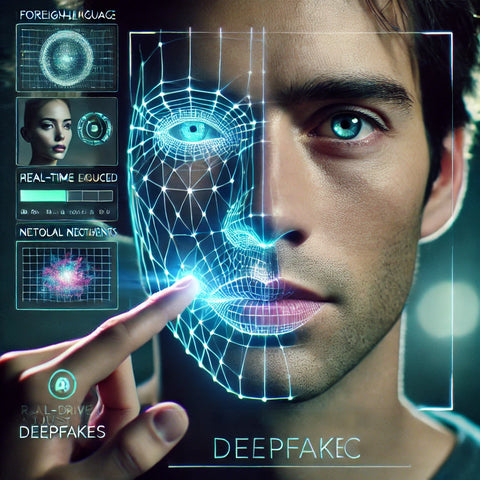
The Rise of Deepfake Videos: How AI is Shaping the Future of Visual Effects
Share
Deepfake videos, once seen as a controversial novelty, have grown into a transformative tool for visual effects (VFX) in the entertainment industry. With AI at its core, deepfake technology is pushing the boundaries of what’s possible, enabling filmmakers and creators to achieve previously unimaginable effects. But how did deepfakes go from being a concern about misinformation to revolutionizing creative industries? Let’s dive into how this cutting-edge AI technology is reshaping the future of visual effects.

What Are Deepfakes?
Deepfakes refer to AI-generated media in which a person’s likeness is swapped with another in a video, image, or even audio. This is achieved using a form of machine learning called Generative Adversarial Networks (GANs), where two neural networks work together: one creates fake content, and the other tries to detect it. The process results in highly convincing, realistic alterations that can seamlessly merge digital faces, voices, or actions onto original footage.
While deepfakes have been criticized for their role in spreading misinformation and unethical uses, their potential in the film industry and creative arts is rapidly gaining traction.

How Deepfakes Are Revolutionizing Visual Effects
-
Resurrecting Legendary Actors
Imagine seeing long-gone actors return to the screen, appearing in new roles with their iconic faces and voices. Deepfake technology makes it possible to digitally recreate these performers with remarkable accuracy. Movies like Rogue One and The Irishman have already used early versions of this tech to de-age or bring deceased actors back into their roles, but deepfakes take this to the next level by offering more natural and less labor-intensive results. -
De-aging and Re-imagining Characters
De-aging has always been a challenging process in the film industry, but AI-driven deepfakes are making this more accessible and convincing than ever before. By analyzing a vast amount of footage and photos of an actor at different ages, AI can recreate a younger version of them, blending the new face with the actor's current performance in a way that feels natural.
![]()
-
Enhancing Lip-Syncing and Dubbing
Traditional dubbing can sometimes break immersion, especially when the character’s lips don’t match the dialogue. Deepfakes are changing this by allowing actors' faces to be manipulated to match the lip movements of different languages. This brings a whole new level of realism to foreign-language films, making the experience smoother for global audiences. -
Unlimited Creative Possibilities
Beyond simply replacing actors or enhancing scenes, deepfakes offer creators unlimited possibilities. Want to bring a historical figure into a futuristic setting? Or envision a new take on a beloved classic film? Deepfake technology opens the door to entirely new forms of storytelling that blur the line between the real and the artificial. This level of creative control was unthinkable even a decade ago.
Ethical Considerations in Deepfake VFX
While the rise of deepfakes presents exciting opportunities for filmmakers, it also raises important ethical questions. Who owns the rights to an actor’s face once it’s digitally recreated? What happens when audiences can no longer distinguish between what’s real and what’s artificial? These are critical issues that need to be addressed as deepfake VFX continue to evolve.
Entertainment industries are working toward transparent guidelines to ensure deepfakes are used ethically and with consent. With clear boundaries, this technology can be a groundbreaking tool for good, rather than a vehicle for deception.

The Future of Deepfakes in Visual Effects
As AI technology progresses, deepfakes are becoming more accessible, accurate, and cost-effective. This will democratize the world of visual effects, allowing even small studios or independent creators to harness tools that were once only available to big-budget productions. We are on the cusp of a new era in storytelling, where AI-driven effects will shape the future of how we consume and create media.



